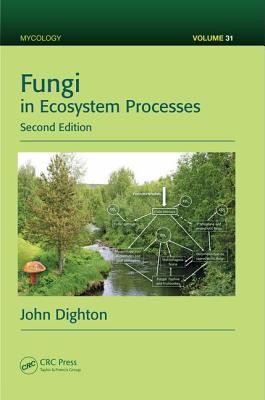
- We will send in 10–14 business days.
- Author: John Dighton
- Publisher: CRC Press
- ISBN-10: 1482249057
- ISBN-13: 9781482249057
- Format: 15.5 x 23.6 x 2.5 cm, kieti viršeliai
- Language: English
- SAVE -10% with code: EXTRA
Reviews
Description
This new edition of Fungi in Ecosystem Processes continues the unique approach of examining the roles of fungi from the perspective of ecosystem functions. It explores how fungi have adapted to survive within particular constraints, how they help to maintain homeostasis in ecosystems, how they facilitate resistance to perturbations, and how they influence the communities of other organisms.
Updated and revised, the second edition
- Expands the section on plant pathogens, invasive species, and insect-fungal interactions
- Provides more extensive coverage on insect-fungal interactions, including entomopathogens, the links between entomopathogens and endophytes, and symbiotic and mutualistic interactions
- Adds a new section on fungi in the built environment
- Presents new material on below-ground to above-ground interactions mediated through fungi, such as mycorrhizal signaling systems for herbivory defense
The book also includes expanded coverage of the role of fungi in suppressive soils, aquatic and marine fungi, modern methods of following food chains in fungal-invertebrate trophic interactions, and the physiology of nutrient uptake by mycorrhizae.
A necessary update and expansion to previous material, this book provides an essential reference on the current understanding of fungal roles in ecosystem processes. It also identifies directions for future study, including an emphasis on the need for further research on fungi in built environments.
EXTRA 10 % discount with code: EXTRA
The promotion ends in 23d.16:05:00
The discount code is valid when purchasing from 10 €. Discounts do not stack.
- Author: John Dighton
- Publisher: CRC Press
- ISBN-10: 1482249057
- ISBN-13: 9781482249057
- Format: 15.5 x 23.6 x 2.5 cm, kieti viršeliai
- Language: English English
This new edition of Fungi in Ecosystem Processes continues the unique approach of examining the roles of fungi from the perspective of ecosystem functions. It explores how fungi have adapted to survive within particular constraints, how they help to maintain homeostasis in ecosystems, how they facilitate resistance to perturbations, and how they influence the communities of other organisms.
Updated and revised, the second edition
- Expands the section on plant pathogens, invasive species, and insect-fungal interactions
- Provides more extensive coverage on insect-fungal interactions, including entomopathogens, the links between entomopathogens and endophytes, and symbiotic and mutualistic interactions
- Adds a new section on fungi in the built environment
- Presents new material on below-ground to above-ground interactions mediated through fungi, such as mycorrhizal signaling systems for herbivory defense
The book also includes expanded coverage of the role of fungi in suppressive soils, aquatic and marine fungi, modern methods of following food chains in fungal-invertebrate trophic interactions, and the physiology of nutrient uptake by mycorrhizae.
A necessary update and expansion to previous material, this book provides an essential reference on the current understanding of fungal roles in ecosystem processes. It also identifies directions for future study, including an emphasis on the need for further research on fungi in built environments.


Reviews